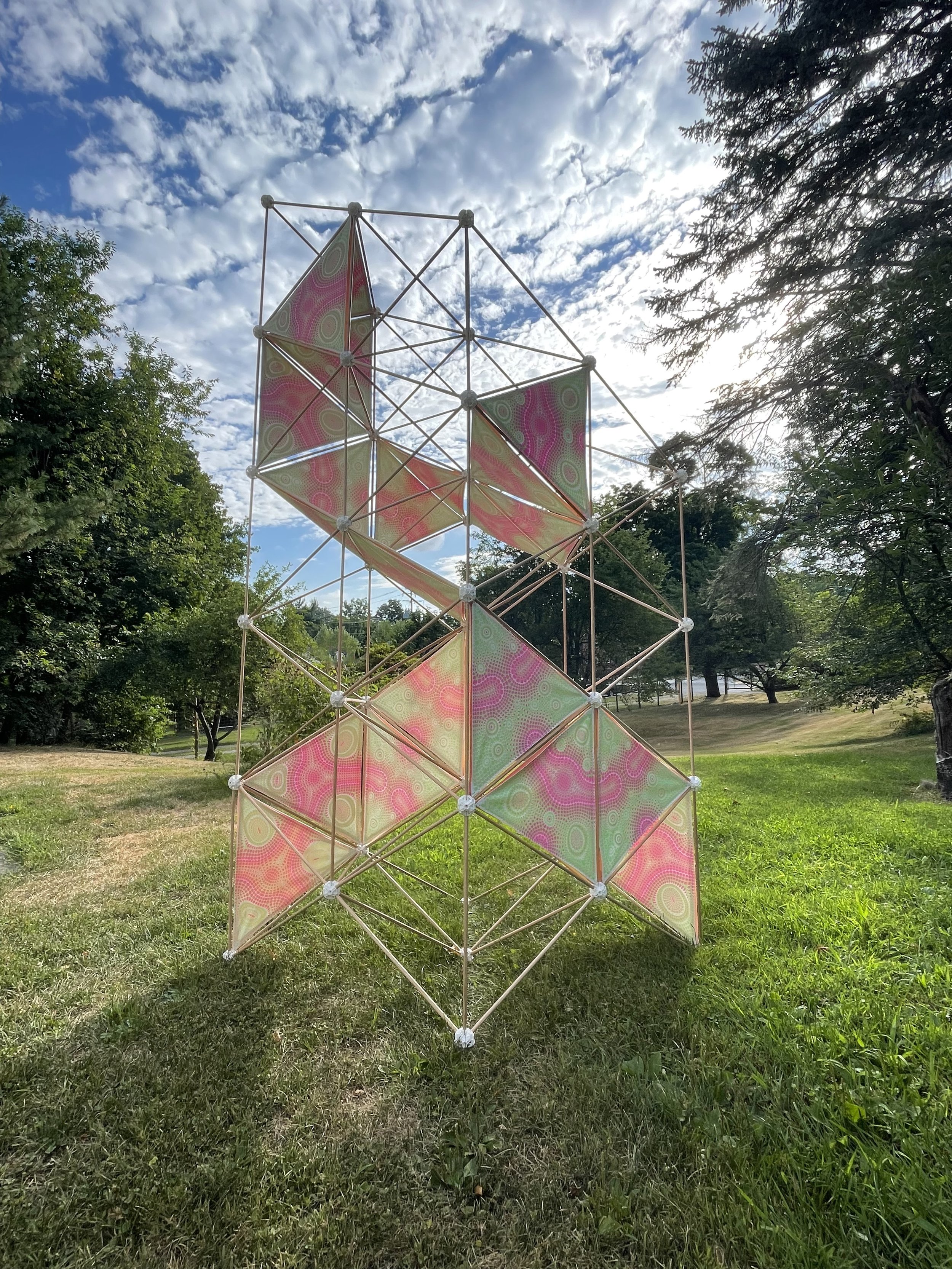RESPONSE PATTERNS PROJECT
(Top) Solar Simplex Modular Structure, UV Reactive Silkscreen
(Bottom) 3D Print, Machine Embroidery, Proposal Renderings, UV Reactive Silkscreen
Response Patterns is a collaborative project to design environmentally responsive and interactive textiles and structures. The project leverages Anette Millington’s unique experience in creating large-scale textile sculptures for exterior and interior sites, and Travis Fitch’s in-depth knowledge of digital tools, geometry and architectural design.
Together, we explore surface pattern, modular construction, and reactive materials — including silk screening with photochromic pigment — to imbue place into the materiality and imagination of our work. The ongoing study of geometric and biological patterning, animates this process. We work with a wide range of textile embellishment methods, including 3D printed deposition, photochromic and thermochromic silk screen, digital print and embroidery on textile. We build modular systems for textiles, creating playful and dynamic structures that can combine and recombine in response to specific locations, programs or environmental factors.
(Left to Right) Millington, Fitch, Zhang
Response Patterns was supported by the Center for Craft's 2019 Materials-Based Research Grant, which fosters new craft-based approaches to STEM research and advances innovative research in craft materials. The original project leveraged interdisciplinary experience—Yuchen Zhang’s knowledge in material science and interactive technology, Travis Fitch’s methodical study of architecture, geometry and digital fabrication, and Anette Millington’s expertise in textile art and embellishment.
The Response Patterns Project culminated in Solar Simplex- a build of the modular textile system developed with Travis Fitch. Combining photosensitive silkscreen panels and 3D printed nodes. The work was shown at in Center for Craft in 2023 in the exhibition Material Reasoning.
Material Reasoning is a group exhibition of Center for Craft Materials-Based Research Grant recipients from 2017-2020. From woven computer displays and robot-felted sculptures to thermal printed textile structures and bone china formulations, the works on view showcase the immense potential of collaboration between craft artists and practitioners in the fields of science, technology, engineering, and mathematics (STEM) and the summits of creative output that could only be reached by breaking through disciplinary boundaries.



